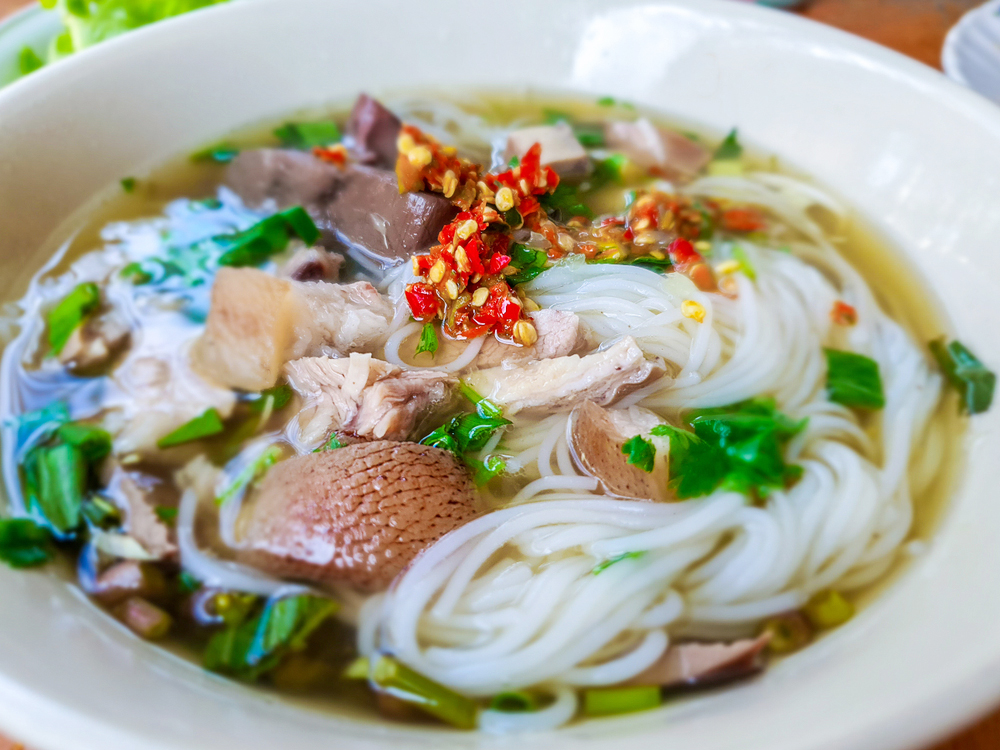Hit the Food Route and Enjoy 5 Famous Dishes of Loei Province
Loei province has several unique dishes that are concocted by locally-found ingredients and seasoned with Isaan-style condiments. These dishes are so flavorful and irresistible that you will find it hard to put down the spoon!
As commonly known, a "local cuisine" often reflects an identity of each region thanks to local ingredients used in those dishes. Loei province, similar to other provinces in the country, also has its own unique menus especially the ones to pair with sticky rice. Some local plants and vegetables are seasonal and can be used in different dishes with different cooking methods. This is what makes local dishes special and worth the wait for many food enthusiasts. Therefore, the Designated Areas for Sustainable Tourism Administration (Public Organization) or DASTA has had an idea to introduce these local ingredients and delicious dishes to visitors to taste and experience the authenticity of Loei province.
"Khao Poon Nam Jaew" or Fermented Rice Noodles in Pork Broth
Khao Poon Nam Jaew is a must-try dish when you visit Chiang Khan district in Loei province. This local signature menu consists of freshly-made fermented rice noodles in clear pork broth with boiled pork offal and assorted vegetables such as water spinach, cabbage, spring onions, and yardlong beans. Before eating, it is recommended to squeeze some lime and add a dash of shrimp paste or Kapi to season the broth. If you prefer a bit of spiciness, you can add finely-ground fresh chilies into the broth. But, be careful because their fresh chilies are really hot!

Som Tum Dong Dang or Spicy Papaya Salad with Round Fermented Rice Noodles
"Dong Dang" rice noodles are made of fermented rice flour being pressed through a squeezer until long round noodles come out. The round fermented rice noodles are boiled in hot water until cooked and then mixed with spicy papaya salad or Som Tum. You can choose between Som Tum Thai, Som Tum Laos, and Som Tum with pickled crabs and fermented fish sauce. A secret ingredient in Som Tum Dong Dang that makes it different from other Som Tum dishes is "fermented Sathorn leave sauce". This locally-made sauce is made by picking leaves of a local plant called Sathorn and nicely blending them. The Sathorn leaves will be fermented for 4 – 5 days before being stirred until they have become a sauce. Since Sathorn leaves have a salty flavor, the sauce is normally used in place of a regular fish sauce or monosodium glutamate.

Khao Piak Sen or Vietnamese Noodle Soup
Khao Piak Sen or Vietnamese noodle soup is one of the traditional Vietnamese dishes. There are a number of restaurants selling Khao Piak Sen in Loei province. Dried Khao Piak or Vietnamese noodles are opaque white but after being boiled, the noodles will become transparent. If boiling Khao Piak in a pork broth, it will make the broth become thicker and even more mouthwatering. The toppings for Khao Piak Sen are ranging from Vietnamese pork sausage, pork ribs, pork legs, diced spring onions, cilantro, and fried shallots. Khao Piak Sen is commonly and widely eaten throughout Loei province, especially during a cold winter. Imagine how nicely warm you would feel having a bowl of hot Khao Piak Sen under a cool weather!

Som Tum with Fermented Sathorn Leave Sauce
The fermented Sathorn leave sauce is a very unique condiment which is originated by a local knowledge of Loei people, particularly from Dan Sai and Na Haeo districts. The fermented Sathorn leave sauce is frequently used in almost every local dish including Som Tum. The sauce itself gives a salty flavor and can be a substitution of fish sauce. From the look outside, this Som Tum with fermented Sathorn leave sauce looks no difference from other Som Tom menus. The Isaan-style fermented fish sauce or "Pla Ra" can be added for even more deliciousness.
Miang Toon or Green Taro Bite-Sized Appetizer
Miang Toon is a local dish of Phu Ruea district. The key ingredient is a green taro or "Hua Toon" in Thai. Green taro is a plant in the same family as elephant ears. It is a domestic plant with hard corms and light green leaves and leaf stalks. Before cooking, the green taro corms need to be thoroughly washed, peeled, and chopped. It is then mixed with green papaya, ground sesame seeds, slices of ginger, tomatoes, and then seasoned with fermented Sathorn leave sauce. Miang Toon can be served as an appetizer or eaten with rice. Oftentimes, the locals will wrap Miang Toon with locally-found leafy vegetables, making it become one of the staple local dishes of Loei province.
These 5 menus mentioned above are famous local delicacies of Loei province which resemble a mirror reflecting the local ways of life in terms of cultures, traditions, environments, and geographic conditions of a particular region. So, next time you visit Loei province, don’t forget to try these dishes or you’ll be heading home with regrets!
Source:
loei.cad.go.th
m-culture.go.th
tis.dasta.or.th



 Share
Share

 1701395640
1701395640


